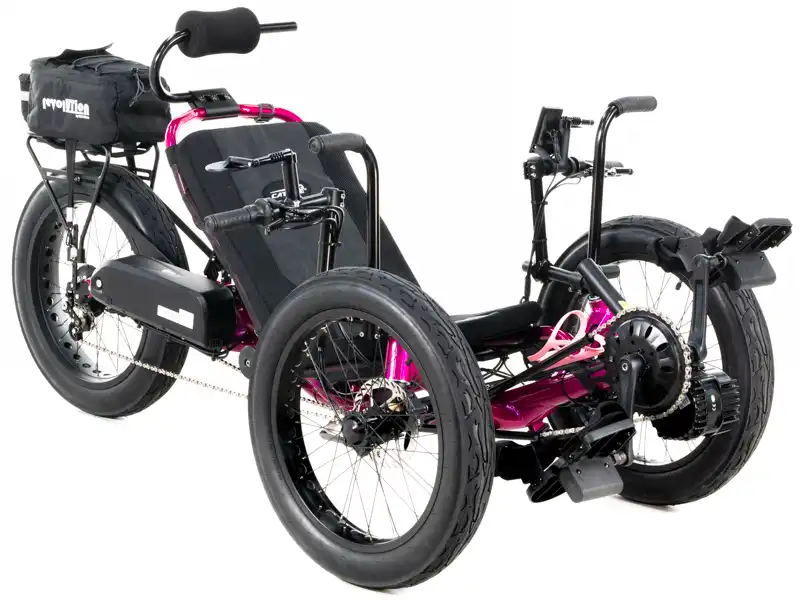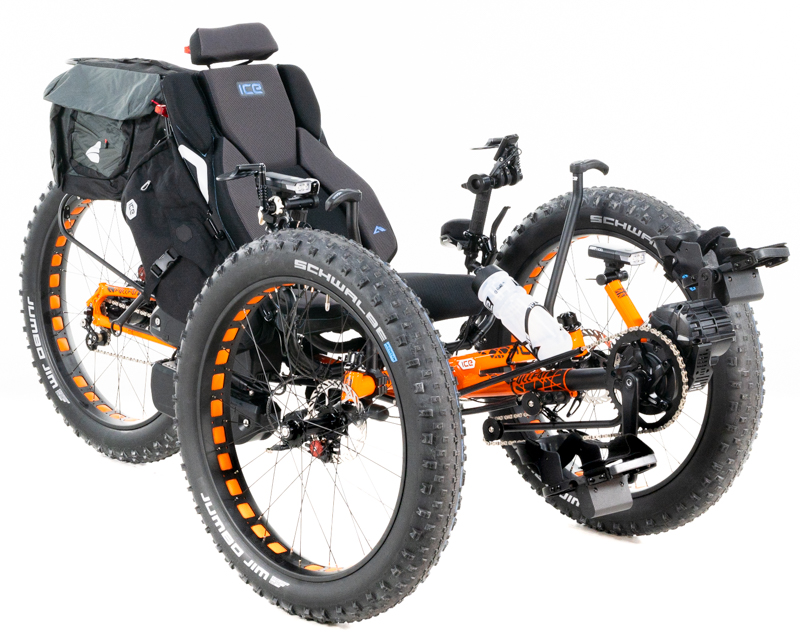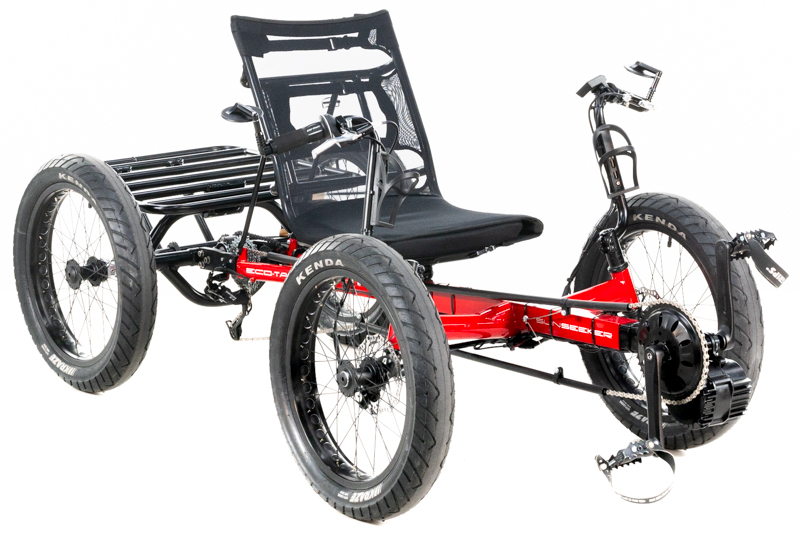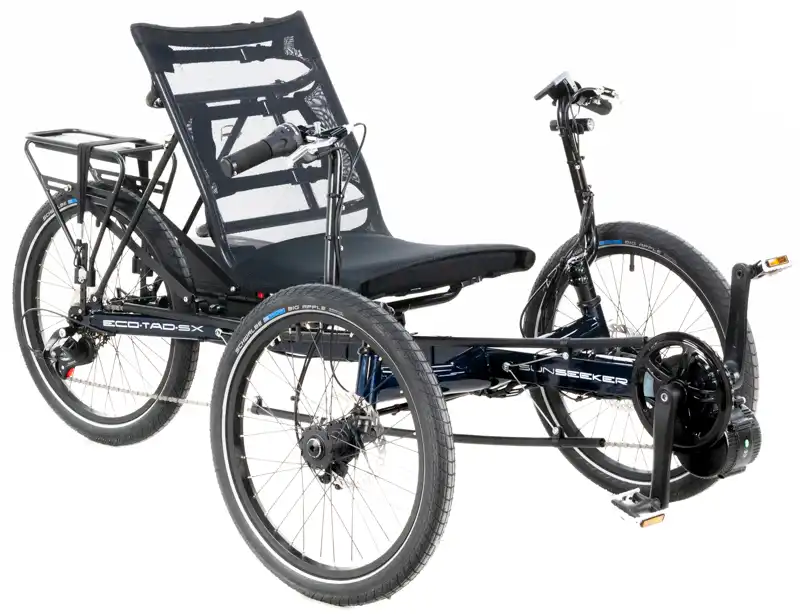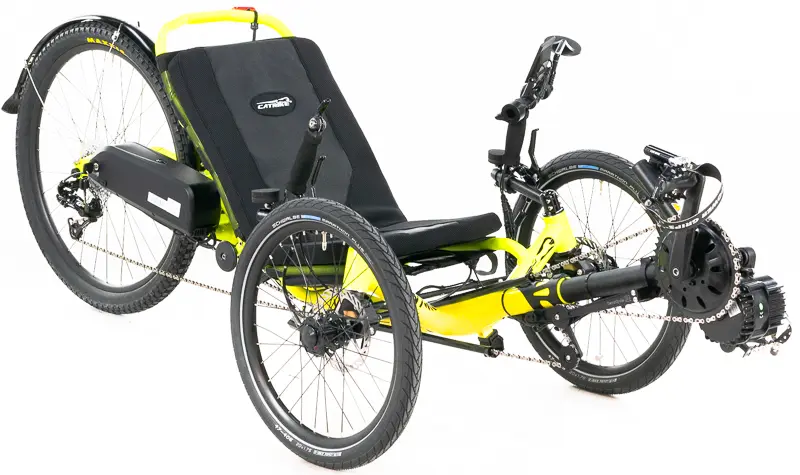
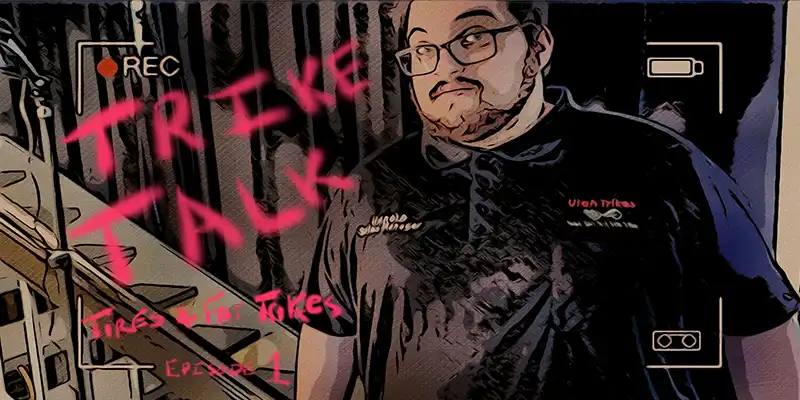
Trike Talk 1: Tires, Fat Trikes, & Other Stuff
Published on 02/19/2025
Hey everybody, welcome back to the trike show. I'm Harold and I'm Brayden, and we're here to talk trikes. This little segment that we're going to be doing weekly is going to be me and Brayden answering your questions and giving you answers about trikes, quads, and everything in between
Letís get into our first question.
Brayden: Hereís a question we got asked on Live Help: Some trikes come with 26 inch rear wheels, some come with 20 inch, some of them are interchangeable. What are the advantages or disadvantages between the two?
Harold: When you have a trike like the ones in the Catrike lineup that all have the same 10-speed gearing except for the Max, which has 11 speed then thatís where you really see the difference between the 20 inch and the 26 inch rear wheels.
Harold: Really the only thing that it comes down to is a larger wheel is going to give you more high gearing, and a smaller wheel is going to give you more low gearing.
Harold: So when you have that 26 in rear wheel you're going to go a little bit quicker on your straightaways you're going to be able to go just about a mile or two more than you would with a 20in wheel, but when you're climbing you're going to be suffering a little bit more because you don't have that low-end gearing for the climbing gear.
Harold: So what you need to keep in mind when you're choosing your wheel size is that a smaller wheel is going to give you a little bit more climbing and more torque. whereas a 26 just going to get you that higher speed potentially
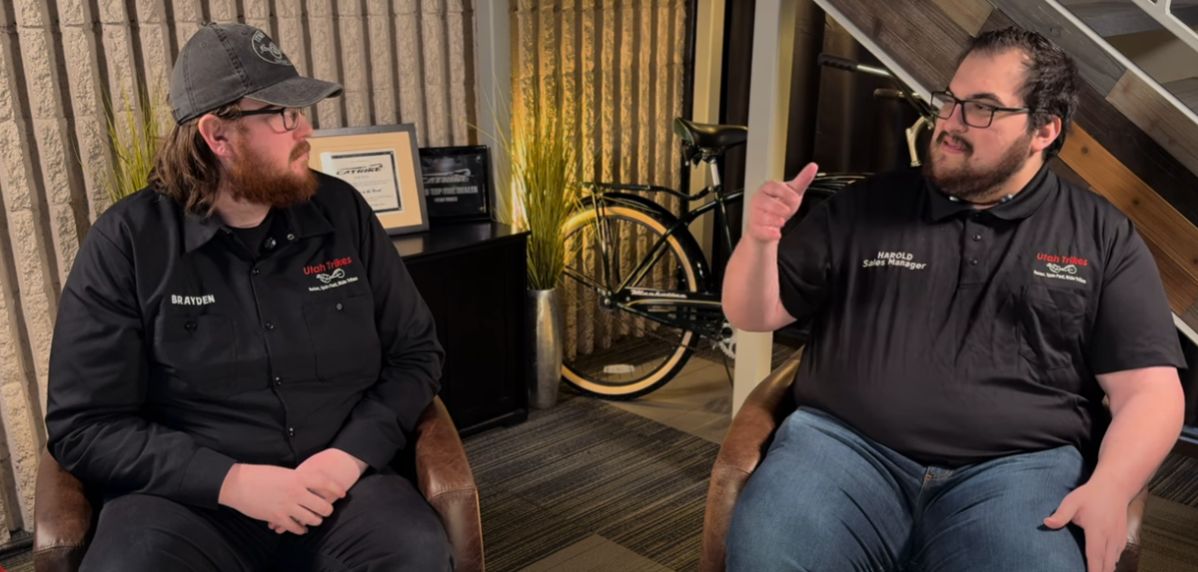
Brayden: What are some other disadvantages or advantages of a 20 inch rear wheel?
Harold: The main other disadvantage is of course the size of the trike. Sure trikes are big already, transporting them and storing them is a big concern for a lot of the people that we work with so if you're really concerned about, how am I going to be able to get this into my car? is this going to be able to fit into my garage or my shed or what not a 20in rear wheel is going to be a more compact package.
Brayden: That's great even on our folding models like the Catrike Trail folded compared to the Catrike 559 folded with the big 26 inch wheel the height of them is just different already so storing a folded trike 20 inch still has an advantage.
Harold: You just have to carry the weight while youíre riding, so if you keep that in mind as well if you're going to be going on touring you don't want to carry a lot with you. Getting a trike with 20 inch wheels all the way around you only have to carry one size of tube. You don't have to worry about keeping a 20 and a 26 inch tube right, it's a lot more convenient.
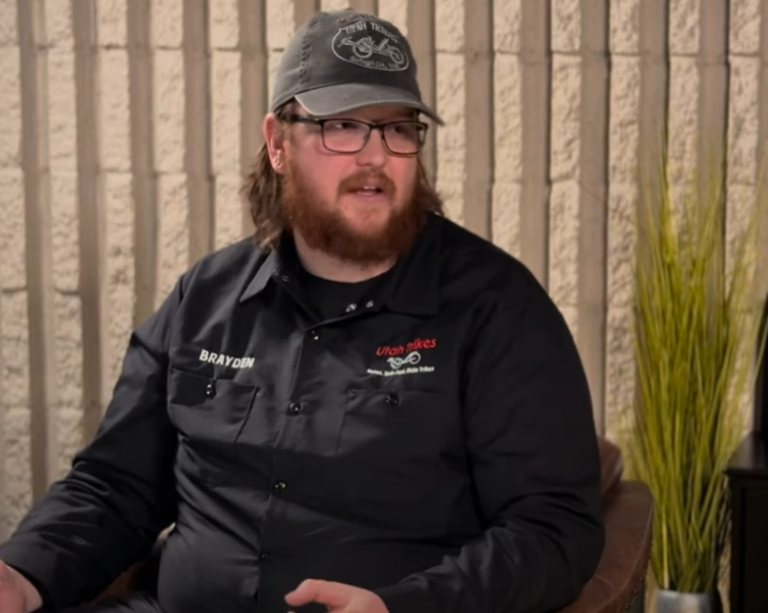
Brayden: So kind of to loop back to the original question: why is it so important that a customer picks a wheel between the 20 in or the 26? I know we kind of went over it a little earlier right?
Brayden: I mean the Catrike Trail is a 20 inch option, 559 is a 26 inch option, the ICE Adventures you get to choose what option you get, what's the point? What's the reason? Why is it so important?
Harold: If we have a customer who is concerned only about speed going as fast as they can I'm going to recommend a 26 inch. That's going to give you the most speed even with a motor. Combine the two of those and you're going to zoom. Where if we have someone whoís worried about storing, climbing, and even if there's a weight capacity concern a 20 inch wheel is going to be a little bit stronger than a 26 inch just because those spokes are a little bit smaller right so that's what I would recommend.
Brayden: Yeah I think that sums it up pretty well. I think we're definitely ready to move on to the next question.
Harold: Why is the D3 incompatible with the 26 by 4 inch wheel?
Brayden: Well I think it's important we start first off with what the Fat Cat D3 is for those that aren't familiar it's a Catrike Dumont frame that we have made custom to have fat tires 20x 4 all the way around there is some complications there we do have to go to like an internal gear Hub on the back which is another good segue wat for a rohloff one of these times but really it's a 20 by 4 inch fat tire trike. We took the Dumont and changed it so you can keep the suspension and still have the fat tires.
Brayden: Unfortunately with those fat tires the rear spacing in the back, the dropouts, there isn't room to add a 26in x 4 in tire.
Harold: Right it is just too narrow as you go further towards the frame of the trike.
Brayden: I would like to kind of add a 20x 4 in Fat Tire isn't going to be the same size as a 20in skinny tire really diameter wise youíre probably looking more like a 24 in tire so I don't think you're missing out on a whole lot compared to the stock configuration and you're still getting plenty of rubber plenty of traction.
Harold: Absolutely yeah it's a little bit smaller than what you see on like the Fat Cat V3 which is another one of our fat cat trikes that does take the 26 by 4.
Brayden: Yeah and I mean I think it's important to also add some trikes come stock with 20in tires it doesn't mean you're stuck with 20 inch tires for all of them we do have custom extension plates for a handful of our trikes so if you have a villager with 20in tires we have extensions for that to make it a 26 inch tire.
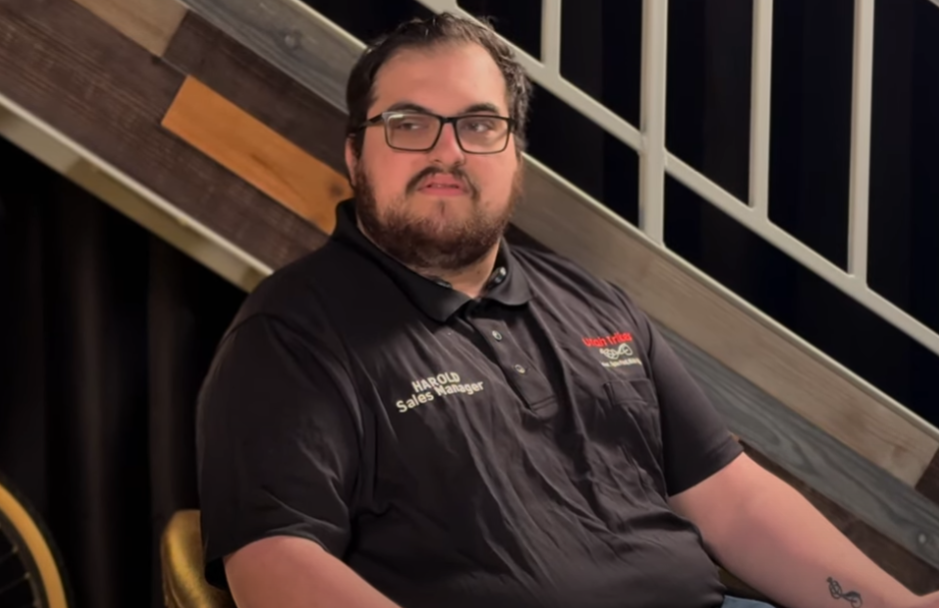
Brayden: Which all circles back to the first question back to tire size, back to speed, back to gear ratios and climbing and whatnot.
Harold: Let's talk about fat trikes
Brayden: Yeah no absolutely absolutely I mean the fan favorite right everyone loves them everyone's got to have.
Harold: They're the rage right now they look great feel great to ride what are the options though for fat tire trikes? What should people be looking at when they're trying to get into the fat trike market?
Brayden: Sure I mean we just talked about the D3 it's my favorite one we've got
Harold: I love it too awesome looking.
Brayden: We don't need to go more into that one but I mean the first option we offered was the V3 shortly mentioned just barely it's built off of the Villager frame Big 26x 4 all the way around nearly right after making the Fat Cat V3 we made the Crawler which is based off of some of the Sunseeker frames
Brayden: Yeah the EZ Tad Fat Tad Crawler RS which is based off of the newer Sunseeker Fat Tad CXS that came out shortly after that right and I mean the big difference between our Crawler RS and the manufacturer CXS, the RS has 26x 4 in theirs has 20 by 4 inch.
Brayden: Just to loop everything back together again and put a nice bow on it, I can't wait to talk about it, I love the ICE Full Fat. It's one of my favorite fat tire trike options.
Brayden: It has a beautiful story the girl runs around all of Antarctica in it perfect speaks for itself almost.
Harold:It comes with the book too so for anyone getting an ICE full Fat hope you you're ready to do some light reading.
Brayden: Well perfect perfect and then another option the Azub Fatty 26 is great I love every everything Azub makes I don't think they did anything wrong making the Fatty. I think the full fat and the fatty go kind of hand in hand with each other right, it's really up to I think a color preference is what it comes down to for me
Harold: Yeah the Full Fat does have rear suspension though.
Harold: Another thing to keep in mind are after trikes you're just looking for something a little bit more little bit more intense you have our quads.
Brayden:I say what's better than three wheels.
Harold: Another wheel maybe.
Brayden: Four wheels is a little crazy.
Harold: What we do with our quads is we have our Revolution eQuad RS, we have our Fat Cat 4, Cat 4 quad, the skies the limit especially with our eQuad we make that in house. We really do our best to custom tailor it to every customer.
Brayden:I mean being made in house gives us a lot of opportunities to customize it however the customer needs it to be so whether that's size weight capacity a second passenger we have options we can totally figure something out
Harold: Yeah if you dream it we can build it.
Harold: A lot of what we see with quad buyers is they're looking to spend a lot of money and a lot of investment in getting a really custom built quad, but for those that are looking for an entry level option what do we have?
Brayden: I mean the Eco Quad. Based off of that Sunseeker Eco Tad frame, keeps cost a little lower, fantastic trike. There is no suspension, a steel frame, but two wheel drive in the back.
Harold: We can throw motor on it the same way you can get that with stock road tires or 20 by 4 inch fat tires.
Brayden: I think it's important to mention fat tires doesn't always mean off-road tires I get asked all the time do you make a street tire option, yes there are street tire options, so don't think that because you have fat tire it is made for off-road it can be for both it depends on the tire tread and then knob you get.
Brayden: Because you brought up the Eco Quad, I want to talk a little bit about the Eco Tad. I got asked the other day, can you add a front derailer system to an Eco Tad? which I know is a loaded question.
Harold: So not really. The Eco Tad really wasn't built with that in mind. It is something that with a lot of custom fabrication on your end you could do. The first thing that you're going to have to overcome of course is that the Eco Tad does not have a front derailer post so what you're either going to have to come up with is you're going to have to find a post to weld onto the front of the Eco Tad or bolt on there.
Harold: You have that derailer and you can get a three-speed. Another problem all the derailers and all front crank options are going to require is an idler guess what the Eco Tad doesn't have? It is unique in that it does not have any idlers; it runs straight from the front crank all the way to the back where your cassette is.
Brayden: So what you then have to do and this is when it starts to get dangerous you're going to have to find a way to get an idler onto your trike which is going to involve drilling the frame welding components and then when you start messing with the frame of your trike start messing with the Integrity of your trike and then things can go wrong right.
Brayden: I mean I wouldn't generally recommend drilling holes through your frame
Harold: It's a pretty dangerous risk don't drill holes in things that don't have a hole already. We used to have a conversion we used to do thatís not often but we could do it. We just decided to get away from that because there are other options in the same price range and what you'd be spending and all of this Custom Fabrication and all of this work you could just go to Sunseeker EZ Tad for a few hundred more you have a three-speed and you have 8 speed in the bag bada bing bada boom you're good.
Brayden: Instead of spending all the money on Custom Fabrication to make a trike work there's already trikes that works and it's going to cost about the same between the custom fabrication.
Harold: If you're getting an Eco Tad and you want to go fast, just get a motor.
Brayden: I mean that's what it comes down to just putting a big fat motor on there. They hold up really great.
HaroldGet a throttle and have a great time Speed Racer.
Brayden: So speaking about a motor right throwing a motor on an Eco Tad. I love motors. I get asked all the time what is the point of changing the chain ring size in tangent with the motor?
Harold: What you have to keep in mind is that a bigger size chain ring in the front is going to equal more speed more power and a lower size chain ring is going to be more torque and better climbing. what you got to keep in mind too is that all of our motors are going to go at least 20 miles per hour so when you start to look at getting a trike and the first thing you're thinking is and you've not even ridden the trike yet and you're worried about the chain ring size my recommendation just ride the trike first. get on it, ride the trike first. You might be pleasantly surprised at how much the motor can take up in your speed, your climbing and everything.
Brayden: That's my favorite thing trikes with a motor on them like all of your torque speed I'm not really worried about them the throttle kind of does everything for me if I need it to the right great equalizer.
Harold: We calling it the great equalizer down here.
Harold: Absolutely, I mean I recommend trying your trike first and then if you are finding that your cadence isn't matching up you need more power more torque give us a call we'll help you work that out after you try out the trike.
Brayden: Try it stock you're going to like it anyways try it out and then we can fine tune it as you work through it right.
That's It for this week! If you have any questions that you'd like answered in a Trike Talk be sure to call us, email us, or go on live help! We're here for whatever you need! Remember to relax, spin fast, and ride trikes! We'll see you next time!





